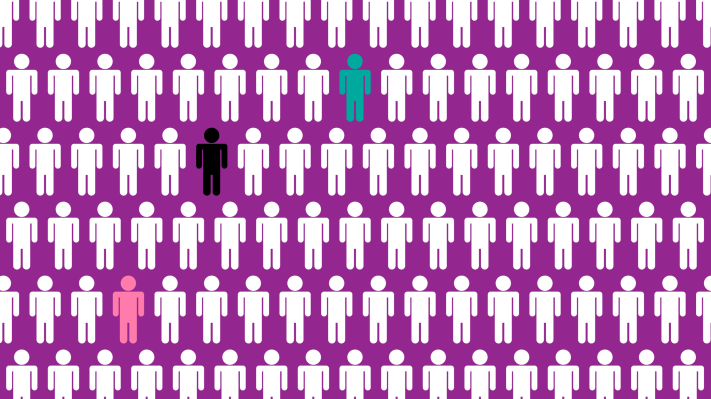There was once a time when everyone knew in their hearts that the tech industry was super white and male-dominated but didn’t have the stats to back it up.
Now that the likes of Facebook, Apple, Twitter, Google, Amazon, Netflix and, most recently, Uber, have released their reports, the stats are out there. And what a lot of people thought about the industry’s lack of diversity turned out to be true.
Since the first diversity data came out in 2013, thanks to a Freedom of Information Act request, followed by willing disclosures by many well-known tech companies, very little has changed.
There is also still a handful of tech companies that have yet to release diversity reports, including Lyft, Snap, Spotify, Tesla, Twilio, Instacart, Sprig and Postmates. But given that barely anything seems to change, like the overall representation of people of color and company culture, for the companies that do release diversity reports, perhaps it does not even matter that these companies haven’t.
Let’s be real. At this point, releasing a diversity report would be a damned-if-you-do, damned-if-you-don’t of scenario. If those companies were to suddenly release their reports, it would appear they were only doing it because they felt like they had to and not because they wanted to and were committed to truly fostering a more diverse, inclusive and equitable work culture. It could come off as an attempt to get a pat on the back, rather than a thoughtful attempt to advance diversity and inclusion. But if they don’t release a report, it may appear that diversity and inclusion are not priorities for them.
But instead of questioning why those companies haven’t yet released those reports, I’m going to take some time to explore why these diversity reports exist, what they accomplish, what we want them to accomplish and where we go from here.
Although diversity reports — which generally entail a breakdown of how many women and people of color are employed at a company in relation to white men, as well as sometimes stats on people with disabilities and LGBTQ people — are good for the sake of transparency and accountability, they accomplish very little else. For one, they put the onus “the other.” It might make some of us have to take a closer look at our otherness, and be forced to think about it more than we already do.
Also, they don’t make the work environment any better for people who may feel marginalized, passed over, discriminated against or harassed. Let’s take a look at Uber. After pressure from Rev. Jesse Jackson and the public in light of sexual harassment allegations from a former Uber employee, the company finally released a diversity report. It was bad, but it wasn’t the worst report we’ve ever seen. What that tells us is that raw numbers and percentages don’t have an impact on culture. It just shows that you can’t judge a company’s culture by its not-the-worst-we’ve-ever-seen numbers.

Uber CEO Travis Kalanick speaks on stage during the Vanity Fair New Establishment Summit at Yerba Buena Center for the Arts on October 19, 2016 in San Francisco, California.
The Equal Employment Opportunity Commission requires companies to collect data about race, gender, job category and level. But that’s it. It doesn’t get into how many lesbian, gay, bisexual, transgender and queer people a company employs. It doesn’t ask for information about people with disabilities. Nor does it ask for intersectional identity data. When some companies release their reports, they use their own surveys in order to obtain information about the things the EEOC doesn’t collect in its annual survey.
Where tech companies have the most autonomy is in deciding what to do with this data: make it public or to keep it private; make it public and set goals (few companies have set public goals); keep it private and set private goals.
There are many ways to approach the situation. Tech companies that have yet to release their reports could argue that they recognize these reports do very little, and are instead focused on more meaningful change. That type of argument would, of course, be met with lots of scrutiny, but I’d be willing to listen. What’s most important is that there are internal structures and protocols in place at tech companies that foster a safe, inclusive work environment for people of all races, genders, ages, abilities and so forth.
I’m not suggesting tech companies stop releasing diversity reports. Nor am I suggesting that those that have not released a report don’t do one. I’m suggesting that diversity reports are not accomplishing what they should be accomplishing.
These diversity reports aren’t supposed to simply exist. They’re supposed to lead to real change, like the employment of more underrepresented racial minorities, LGBTQ people and people with disabilities. They’re supposed to inspire leaders to want to do better and create a better work environment for everyone – one that reflects the culture in which we live. Moving forward, tech companies need to rethink what accountability and commitment to diversity and inclusion looks like.
Diversity reports are just a first step on a very long journey to disrupting this straight, white, able-bodied, able-minded, male-dominated tech industry. Partnerships with historically black colleges and organizations focused on bringing underrepresented youth into tech don’t do anything for the people already employed in tech. Those partnerships don’t make people stop asking black women about their hair at work. They don’t prevent racism and sexism. They don’t help to ensure transgender and gender non-conforming people have a safe place to use the bathroom. They also don’t ensure bosses and co-workers use the right pronouns (he/him, she/her, they/them, etc.) with their trans and gender non-conforming colleagues. I could go on, but you probably get the point.
I do not have the solution, but I do have some suggestions. For starters, white people need to get on board, and those of us who care about diversity and inclusion need to welcome them with open arms. We need all the allies we can get. As Slack Senior Engineer Duretti Hirpa has said, we need accomplices.
There are many resources out there for large and small tech companies alike to implement processes that foster diversity and inclusion. Project Include, for example, has a bunch of free recommendations to advance diversity and inclusion at companies.
And instead of, or in addition to, providing unconscious bias training, employers could offer empathy training. It’s important that people are able to interact with those who are not like them. We also need data around retention and culture, which could be included in a diversity report, so that we can continue to hold individual companies accountable for what goes on inside their offices.
Here are some other things on my wish list:
- The standard stats around employment of people of color, people with disabilities, veterans, LGBTQ people, etc.
- Retention and promotion data
- Hiring and retention goals
- Culture surveys and results (think: employee feedback on fairness, perceived biases at company, opportunities for growth, etc)
- Pay data broken down by race, age, gender, veteran status, disability status
- Gender-neutral bathrooms
- No prefixes in company forms i.e Mr., Mrs., Ms., etc. Yeah, none of that.
- Recognition of the importance of diversity at the leadership level
- Fair and transparent promotion and compensation processes
I’ll probably add to that list as time goes on and as more bullshit continues to pop up. Tech companies, if you’re reading this, feel free to continue with the diversity reports, but please also recognize that the reports are just the beginning. The partnerships are nice but they’re not a full-fledged solution. There’s no foolproof way to getting this right, but please just try to do more. I can guarantee you that there’s always something more you could be doing to make work better for all your employees.
